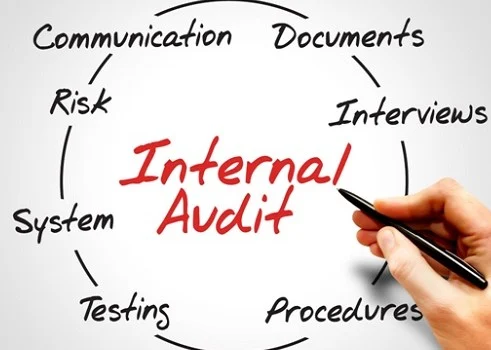An internal audit procedure is a systematic process used by organizations to evaluate and assess their operations, financial systems, and compliance with internal policies and external regulations. The primary goal of this procedure is to identify areas of risk, inefficiencies, and potential improvements, ensuring that the organization is operating effectively and in line with established standards and objectives.
Step-by-Step Internal Audit Procedure
Planning and Preparation
Before the audit begins, auditors define the scope, objectives, and focus of the audit. This involves understanding the department or process to be audited, its significance to the organization, and any potential risks.
Developing the Audit Program
Using template audit programs or creating a custom one, the internal audit program outlines the audit steps, tests to be performed, and the portion of the audit to be covered.
Conducting the Audit
Using an internal audit checklist, auditors gather evidence, conduct tests, and assess compliance management.
Reporting Findings
After completing the fieldwork, auditors prepare a report detailing their findings. This report will highlight areas of concern, potential risks, and recommendations for improvement.
Management Review
The audit committee of the board reviews the audit results, and the final report is issued.
Follow-up
After the report is presented, management typically has to address the findings and implement the recommended changes. Auditors may then conduct a follow-up audit to ensure that the corrective actions have been effectively implemented.
The internal audit procedure is crucial for organizations as it:
- Ensures compliance with laws, regulations, and internal policies.
- Identifies inefficiencies and recommends improvements.
- Assesses the effectiveness of risk management strategies.
- Assures stakeholders, including the board of directors and senior management, that the organization is operating effectively and efficiently.
It's worth noting that internal audits are conducted by an organization's staff or hired consultants, making them different from external audits, which independent third-party firms perform.
Benefits of an Internal Audit Procedure
The implementation of a robust internal audit procedure offers a plethora of benefits to an organization. These benefits span across operational, financial, and compliance dimensions, providing valuable insights and fostering a culture of continuous improvement. Here are some of the key benefits of an internal audit procedure:
Risk Management
Internal audits help identify and assess potential risks, allowing organizations to implement measures to mitigate these risks before they escalate.
Operational Efficiency
By examining processes and procedures, internal audits can pinpoint inefficiencies and recommend improvements, leading to streamlined operations and better resource utilization.
Financial Accuracy
Internal audits ensure that financial statements and records are accurate, complete, and in line with accounting standards, reducing the risk of financial misstatements.
Compliance Assurance
Audits ensure that the organization is compliant with relevant laws, regulations, and industry standards, thereby reducing the risk of legal and regulatory penalties.
Protection of Assets
Through the evaluation of internal controls, audits can help safeguard an organization's assets from theft, fraud, and misappropriation.
Improved Decision-Making
With accurate financial and operational data, management can make informed decisions that align with the organization's strategic objectives.
Stakeholder Confidence
Regular internal audits assure stakeholders, including investors, employees, and customers, that the organization is well-managed and operates with integrity.
Identification of Cost-saving Opportunities
Audits can highlight areas where costs can be reduced without compromising on quality or efficiency.
Enhanced Accountability and Transparency
Regular audits foster a culture of accountability at all levels of the organization, ensuring that responsibilities are clearly defined and executed.
Preparation for External Audits
A rigorous internal audit procedure can make the external audit process smoother by ensuring that the organization is already in compliance and that potential issues have been addressed.
Continuous Improvement
Internal audits provide feedback loops for continuous improvement, ensuring that the organization remains agile and responsive to changing business environments.
Validation of Controls
Audits test the effectiveness of internal controls, ensuring they are robust and fit for purpose.
Enhanced Corporate Governance
Regular audits support good corporate governance practices by ensuring that checks and balances are in place and functioning effectively.
Cultural Insights
Internal audits can also shed light on organizational culture, highlighting areas where values may not be aligned with the company's objectives or where there might be resistance to certain policies.
Fraud Detection
While not primarily a fraud detection tool, a thorough internal audit can uncover irregularities or suspicious activities that might indicate fraud.
Conclusion: The Path to a Streamlined Process
In conclusion, a well-executed internal audit procedure is a meticulous process that involves careful planning and execution. From crafting a detailed audit plan to performing an internal audit with a well-prepared checklist, every step is pivotal in ensuring the organization’s adherence to compliance requirements and its operational efficiency.
Internal audits provide a robust mechanism for organizations to scrutinize their operations, fostering a culture of transparency and accountability. By understanding the types of internal audits and following a step-by-step guide, organizations can ensure a streamlined process that not only meets the compliance requirements but also helps in building a stronger, more resilient organization.
Remember, a successful internal audit is not just about finding faults; it is about identifying opportunities for improvement and fostering a culture of continuous improvement. So, as you embark on your next audit project, remember to leverage the insights from this guide to ensure a successful and effective audit process.

